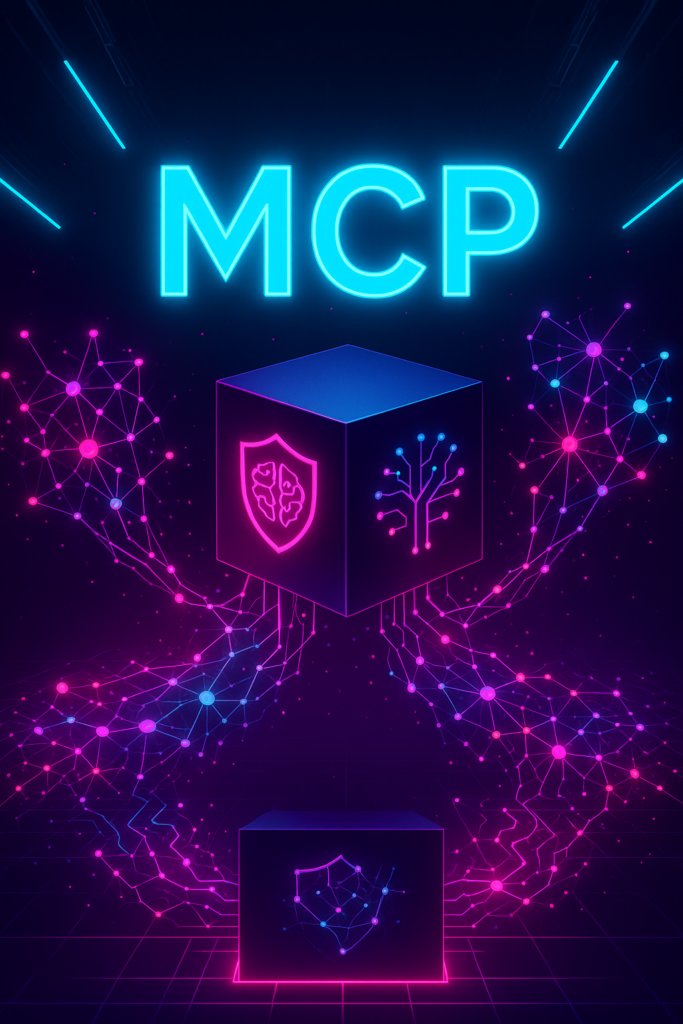Model Context Protocol, or MCP, is steadily transforming the way AI interacts with the digital world, but understanding what it is and how to secure it is crucial for both newcomers and tech enthusiasts alike. At its essence, MCP serves as a bridge that connects powerful AI agents with the tools, data, and services they need to actually do something useful, beyond just generating text. Before MCP came onto the scene, integrating AI with tools like databases, cloud services, or even a local spreadsheet was a tangled mess of custom APIs, complex code, and endless maintenance. MCP streamlines this chaos, creating a universal standard that allows AI agents to seamlessly request and receive information or execute actions without having to grapple with unique integration codes for each tool. Think of it as handing your AI assistant a universal remote control that can operate every digital device in your office, home, or even across the globe, all without needing to memorize a dozen different remotes. The architecture of MCP is elegantly simple but profoundly powerful. At the heart of this system are MCP clients, which reside inside AI applications—whether it’s a chatbot, a virtual assistant, or a development environment. These clients act as the messengers that pass requests from the AI to the MCP servers. MCP servers, in turn, function as interpreters or adapters. They take the AI’s structured requests, translate them into commands that the connected tools and systems understand, and relay the results back to the AI. The communication between clients and servers follows a standardized protocol that keeps interactions clean, predictable, and scalable. This protocol ensures that an AI system doesn’t need to understand every unique aspect of a tool it connects to; it simply follows the rules set out by MCP to get the job done. The potential for MCP is immense. Imagine AI agents not just answering your queries but handling complex, multi-step tasks like pulling sales data from a CRM, summarizing documents, or even transcribing a YouTube video—without needing developers to build custom integrations for each one. This is the promise of MCP, but with this promise comes significant responsibility. The same power that makes MCP a revolutionary tool for AI also makes it a tempting target for cyber threats. Unsecured MCP setups can act as open gateways for malicious actors, unintentional misconfigurations, or simply negligent practices, leading to data breaches, unauthorized system access, and vulnerabilities in the AI models themselves. This is why understanding how to secure MCP deployments is not just a technical requirement but a business imperative. Securing MCP environments requires a multi-layered approach. The foundation of this security lies in adopting a zero trust mindset. This means not assuming any tool, connection, or data source is trustworthy by default. Every component, from the AI agent to the MCP server, must be authenticated and authorized, with permissions granted strictly on a need-to-know basis. This approach ensures that even if one part of the system is compromised, the potential damage is contained. Implementing rigorous access controls, regular validation of connected tools, and strong authentication measures like multi-factor authentication are essential steps in this process. This is not just about locking doors; it’s about creating a security culture where every action and connection is verified. Another critical layer involves proactive testing and validation of the entire system through practices like Red Teaming. Red Teaming involves ethical hackers simulating attacks to uncover potential vulnerabilities before malicious actors do. This helps identify weak points in AI behavior, tool configurations, and integration pathways. Coupled with well-defined guardrails that limit what AI agents are allowed to do, this approach minimizes the chances of unauthorized or harmful actions. For instance, without these guardrails, an AI model might inadvertently execute a destructive command due to a prompt injection attack, where malicious instructions are hidden in seemingly benign inputs. MCP servers themselves are high-value targets that demand robust defenses. They should be fortified with strong authentication mechanisms, encryption of data in transit and at rest, and continuous runtime monitoring to detect anomalies. Network segmentation and isolation of MCP servers from other critical systems further reduce the risk of lateral movement by attackers. Importantly, the selection and use of MCP servers must be approached with caution. Only verified, trusted servers should be integrated into the system, with supply chain security measures such as cryptographic signing, dependency scanning, and version control applied to prevent the introduction of malicious or compromised components. Monitoring plays a pivotal role in securing MCP environments. Real-time visibility into every interaction, from the AI agent’s request to the tool’s response, enables swift detection and response to suspicious behavior. Olezka Global’s AI SOC Monitoring solution exemplifies this approach by integrating seamlessly with existing SIEM and XDR platforms, offering comprehensive oversight, forensic capabilities, and automated responses to threats. This continuous monitoring ensures that security teams can act quickly and effectively, reducing dwell time for potential threats and maintaining system integrity. Isolation strategies are equally important. High-risk tools or operations should be executed within sandboxed environments where any fallout from a breach or malfunction is contained. This approach minimizes the impact of any single compromised component, preserving the broader system’s security posture. Similarly, prompt injection attacks—where hidden commands are smuggled into content processed by the AI—must be countered with input validation and sanitization processes that strip out potentially malicious elements before they can be acted upon. Olezka Global stands at the forefront of this evolving security landscape. With partnerships spanning the AI and cybersecurity industries, the company is uniquely positioned to help organizations navigate the complex challenge of securing MCP deployments. From developing and testing robust security frameworks to providing Red Teaming services, Olezka Global’s expertise ensures that MCP and the AI models it empowers are not only operationally effective but also secure and resilient. The company’s AI SOC Monitoring extends this protection by delivering comprehensive, real-time monitoring of MCP activities, bridging the gap between traditional cybersecurity and the emerging world of AI-driven systems. The future of MCP is bright, offering
Hybrid workforces and remote users are reshaping how organizations approach productivity and cybersecurity. Gone are the days when simple VPN connections back to the office were enough to secure remote access. VPNs, while once effective, are increasingly viewed as clunky and unreliable, with users forgetting to enable them or choosing to bypass them altogether. This has created gaps in network security that businesses cannot afford to ignore. Secure Service Edge (SSE) has emerged as a comprehensive and modern solution to these challenges, combining multiple security functions into a single cloud-delivered platform. SSE integrates essential components such as zero trust network access (ZTNA), secure web gateways (SWG), cloud access security brokers (CASB), cloud firewalls, DNS-layer security, data loss prevention (DLP), and remote browser isolation. By providing a unified security layer between users and the applications they access, SSE solutions enable centralized control over access policies, threat protection, and compliance enforcement. This approach eliminates the need for users to manage a complex list of VPN profiles for each office, datacenter, or cloud application. Instead, network traffic is automatically routed through the nearest secure cloud node, ensuring both protection and optimized performance. The benefits for businesses adopting SSE are substantial. It allows secure and seamless access for remote workers, whether they are at home, on the move, or in public spaces like cafes and airports. Unlike traditional VPN solutions that rely on user participation, SSE automates traffic protection, providing a consistently high level of security. Beyond secure network access, SSE solutions inspect internet traffic in real-time, block malicious content, sandbox unknown files, enforce compliance rules, and isolate risky browsing sessions. This ensures that users’ internet connections are secure without sacrificing performance or requiring cumbersome on-premise firewalls. SSE also addresses the growing risks of insider threats and accidental data leaks. Well-meaning employees might unknowingly connect to unsafe networks or download compromised files. With continuous monitoring, behavior analysis, and data loss prevention, SSE identifies and blocks suspicious activities before they escalate. For example, with the rise of AI-driven tools and code-sharing platforms, the risk of introducing malware into corporate codebases has grown. SSE solutions can scan and filter traffic to ensure that only clean and safe content enters the environment, reducing the likelihood of backdoors or vulnerabilities. What sets SSE apart is its adaptability and scalability. It caters to businesses of all sizes, from startups to global enterprises, enabling them to extend robust security to every endpoint without requiring significant infrastructure investments. Organizations can scale protection as they grow, adapt to changing compliance requirements, support increasing user counts, and navigate the complexities of hybrid work environments. SSE offers granular access controls for applications, comprehensive visibility into cloud applications and shadow IT, and the ability to enforce precise policies that balance security with user convenience. The integration of firewall as a service (FWaaS) and CASB functionality provides deeper insight and control over network traffic, helping detect and mitigate threats at both application and network layers. SSE also supports protection against misuse of generative AI tools, which are becoming increasingly common in workplace environments. For instance, an employee might unknowingly retrieve code from a compromised AI tool containing hidden vulnerabilities. SSE’s multi-layered scanning and control mechanisms catch these threats early, preventing potential harm to corporate infrastructure. Instead of juggling separate security solutions for different threat vectors, SSE unifies them under a single umbrella. This simplifies deployment, reduces management overhead, and allows IT teams to focus on strategic initiatives instead of reacting to daily security alerts. A cloud-managed console enables security teams to monitor the entire environment, detect anomalies, respond to incidents, and optimize security policies with efficiency and confidence. The move from traditional VPNs and fragmented security tools to SSE is more than just a technology shift. It represents a strategic evolution in how organizations protect their hybrid workforces and critical assets. It embodies zero trust principles, where access is never assumed and every connection is continuously verified. This proactive approach significantly reduces the risk of data breaches, regulatory non-compliance, and operational disruptions. At Olezka Global, we recognize that safeguarding your organization in a hybrid world demands more than piecemeal solutions. SSE offers a comprehensive, scalable, and efficient framework that ensures your users, data, and applications remain secure, no matter where they operate. Whether you are supporting remote employees, addressing compliance challenges, or seeking to enhance your overall security posture, SSE provides a clear and effective path forward. If you are ready to explore how SSE can strengthen your network, improve user experience, and protect your business from modern threats, reach out to us at Olezka Global. We are here to help you implement a security strategy that is resilient, adaptable, and tailored to your unique needs. Together, we can create a safer digital future for your workforce and customers.
Cybersecurity is no longer an optional add-on—it’s an essential part of doing business in a world where digital threats lurk around every corner. Did you know that in 2024, nearly a quarter of businesses fell victim to cyberattacks? And the forecast for 2025 doesn’t look any brighter, with attackers using AI and more advanced tactics to infiltrate networks. So, what’s the best way to protect your business from these threats? That’s where the big question comes in: should you hire your own in-house Security Operations Center (SOC) team, or partner with a Managed Security Service Provider (MSSP)? Let’s break this down in a way that makes sense—whether you’re a tech guru or just trying to keep your business safe from cyber villains. What’s an MSSP Anyway? An MSSP, or Managed Security Service Provider, is like having a squad of cyber superheroes at your beck and call. These providers offer continuous monitoring, threat detection, incident response, compliance support, and more—without you needing to hire a big, expensive in-house team. Think of an MSSP as an extension of your company’s IT force, bringing specialized expertise and resources that might be tough to build on your own. MSSPs offer services like: MSSPs provide round-the-clock monitoring and threat detection to protect businesses from cyberattacks. They respond quickly to contain breaches, perform proactive vulnerability scanning and management, and offer compliance support for regulations like HIPAA, PCI DSS, SOC 2, and ISO 27001. In addition, MSSPs deliver expert security consulting to help organizations strengthen their defenses and align with best practices.But What’s a SOC? A Security Operations Center (SOC) is an internal team dedicated to keeping your business secure. These pros monitor your network, analyze security events, respond to incidents, and make sure your cybersecurity policies are rock solid. In-house SOCs give you complete control and customization, but they come with hefty costs—both in terms of money and time. SOC analysts are your front-line defenders, working shifts to ensure 24/7 coverage. They manage risk assessments, monitor for threats, handle compliance audits, and develop your organization’s security strategies. Sounds great, right? But building a SOC is no small feat. Let’s Talk Costs Here’s where things get interesting. Building an in-house SOC can cost anywhere from $1 million to $7 million a year, depending on your company’s size and complexity. This includes: Building an in-house SOC requires significant investment, starting with salaries for skilled security professionals such as analysts, engineers, and managers. Additional costs include infrastructure expenses for secure spaces, advanced hardware, and sophisticated monitoring tools, as well as ongoing training and certifications to keep the team up-to-date with evolving threats. In contrast, MSSPs offer flexible pricing models that scale with your needs. You might pay between $10 to $250 per device per month, or $150 to $300 per user. Continuous monitoring and incident response services typically cost between $2,000 and $5,000 per month, while Compliance-as-a-Service support, including audit preparation, ranges from $10,000 to $110,000 depending on the organization’s size and complexity. For many small to medium-sized businesses, partnering with an MSSP provides enterprise-grade protection at a fraction of the cost of an in-house SOC. Plus, you get access to a team of experts without worrying about hiring, training, or turnover. When Should You Consider an MSSP: Partnering with an MSSP makes sense if you’re a small or mid-sized business without the budget to build an in-house SOC. It’s also a smart choice if you operate in a highly regulated industry like healthcare, finance, or government, where compliance expertise is essential. If your business requires 24/7 security coverage but can’t justify the expense of maintaining a full-time, round-the-clock team, an MSSP can provide that support. Additionally, MSSPs offer scalable solutions that can grow with your business, ensuring your security posture keeps pace as your company expands. When Might an In-House SOC Make Sense? Building an in-house SOC might be the right choice if you’re a large enterprise with the budget and resources to establish a full-scale security operation. It’s particularly beneficial if you handle sensitive intellectual property or have unique security requirements that demand tailored oversight. Additionally, companies operating in sectors with strict data privacy laws, such as healthcare or finance, may find an in-house SOC necessary to maintain granular control over compliance and ensure full alignment with industry-specific regulations. Why Not Both? MSSP + In-House SOC = Winning Combo Here’s the real secret: it doesn’t have to be an either/or decision. Many organizations combine the strengths of an MSSP with an internal SOC to get the best of both worlds. MSSPs provide continuous monitoring, threat intelligence, and incident response, while your in-house team focuses on strategic security planning, compliance, and internal risk assessments. Pairing an MSSP with compliance automation tools can supercharge your security posture. MSSPs handle the operational heavy lifting, while automation platforms help with control implementation, reporting, and keeping your organization audit-ready. This approach lets you scale security as your business grows, without burning out your internal team. The Bottom Line Whether you build an in-house SOC, partner with an MSSP, or combine the two, the key is to make an informed decision based on your needs, budget, and long-term goals. MSSPs are a cost-effective way to access world-class security expertise without the overhead. In-house SOCs offer control and customization for businesses with deep pockets and unique security needs. Combining them gives you flexibility, scalability, and a proactive defense against today’s evolving cyber threats. At Olezka Global, we’re here to help you navigate the world of cybersecurity. Whether you need a full-service MSSP, advice on building a SOC, or a hybrid approach, we’ve got your back.


